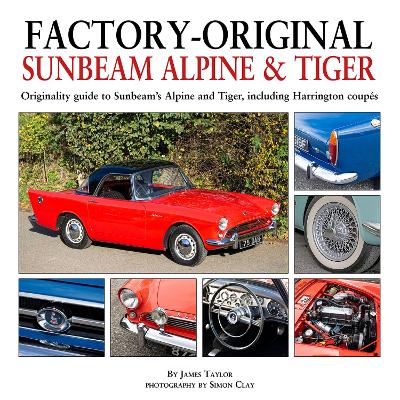Originality Guide
2 total works
Factory-Original Land Rover Series I 86-, 88-, 107- & 109-Inch Models
by James Taylor and Simon Clay
This broad and versatile model range was regularly updated in both major and minor ways as improvements became necessary or suggested themselves. The changes make a fascinating subject of study in its own right, and it is those changes that lie at the heart of this book. For owners and enthusiasts who aim to restore one of these models to its original, ex-factory specification, its pages aim to identify all the changes that were made on the assembly lines, wherever possible not only recording what happened but also why.
With the aid of Simon Clay's photography of some superb examples of the marque, correct details are shown on both complete vehicles and on some under restoration to give the dedicated enthusiast the knowledge needed for an accurate and satisfying restoration. In this book, enthusiast and leading Land Rover historian James Taylor is your guide to the multiple changes in specification that affected the 1953-1956 86-inch, 1953-1958 107-inch, and 1956-1958 88-inch and 109-inch models.
The Sunbeam Alpine was the Rootes Group’s contender for sports car sales, especially in the USA where comparable models from other British makers were selling to what appeared an inexhaustible market. Rootes introduced their car in 1959, and chose to distinguish it from the competition by making it more refined, with such things as winding windows and a permanently-attached soft top. Pretty styling, quite different from rival models, also helped the Alpine to secure a gratifyingly strong position in the market.
Nevertheless, the Alpine was being made at a time when American buyers were hungry for power and performance, and to cater for that end of the sports car market Rootes developed a high-performance derivative that they called the Tiger. This sold alongside the Alpine from 1964, and central to it was an American Ford V8 engine that offered more than twice the brake horsepower of the four-cylinder in the contemporary Alpine.
Over the nine years of its production, the Alpine was produced in five major variants, and with a variety of different specifications, as Rootes gradually improved it to meet customer expectations. The Tiger, which of course arrived later, was produced in two major versions, the second one using an even larger and more powerful version of the Ford V8.
Both cars went through a multitude of specification changes, and this fact makes it hard for the average owner today to determine what the original specification of any individual car would have been. The purpose of this book is to identify the minutiae of the changes that were made on the assembly lines. Some remain controversial, but Simon Clay’s excellent photographs help to provide the visual clarity that today’s enthusiasts need to achieve an accurate and satisfying restoration.

